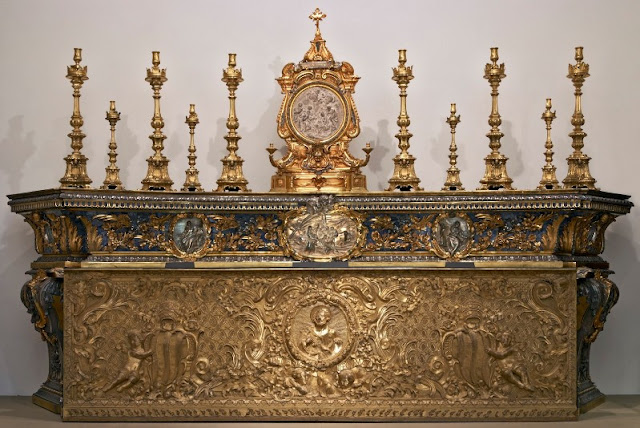The following set presents a good example of it, coming within the context of a Solemn Mass set and accompanying antependium (which contains as its central figure an image of St. Peter), all further embellished with the arms/stemma of Pope Benedict XIV (d. 1758) -- a scholarly pope of the eighteenth century who promoted the sacred arts, the sciences, liturgical and ceremonial life The fourth Earl of Oxford, Horace Walpole, had this to say of the pontiff: "loved by the papists, esteemed by the protestants, a priest without insolence or interest, a prince without favourites, a pope without nepotism, an author without vanity, a man whom neither intellect nor power could corrupt."
The set itself comes from the time of Benedict XIV of course, though whether it was worn by him or simply commissioned and gifted by him is uncertain. The pieces themselves are fairly self-explantory so we will offer them without further comment.


















